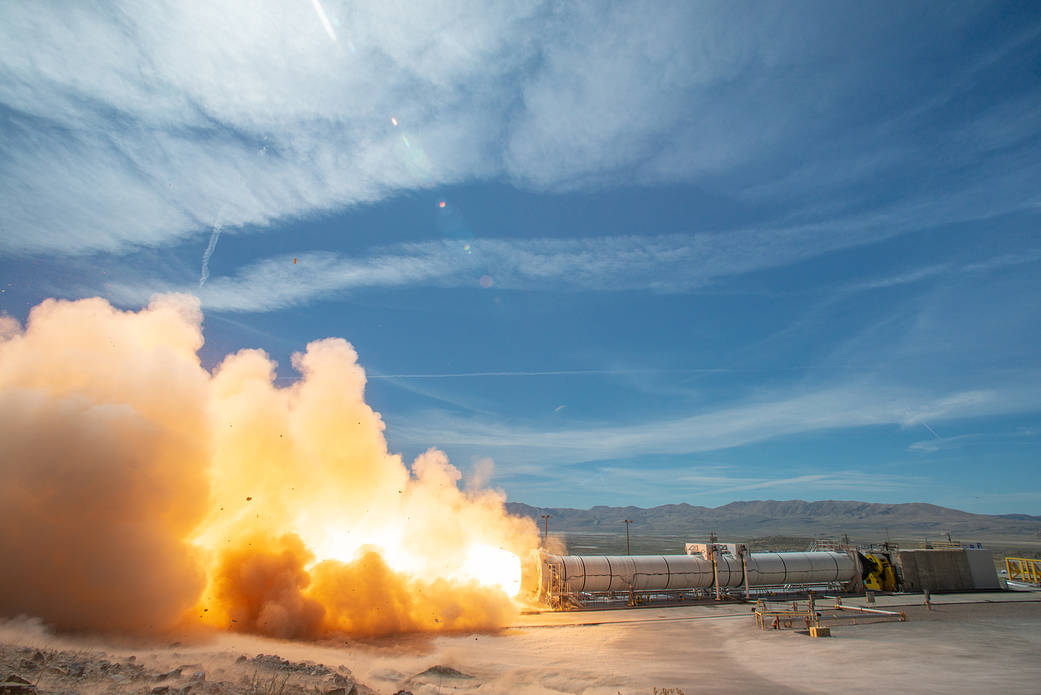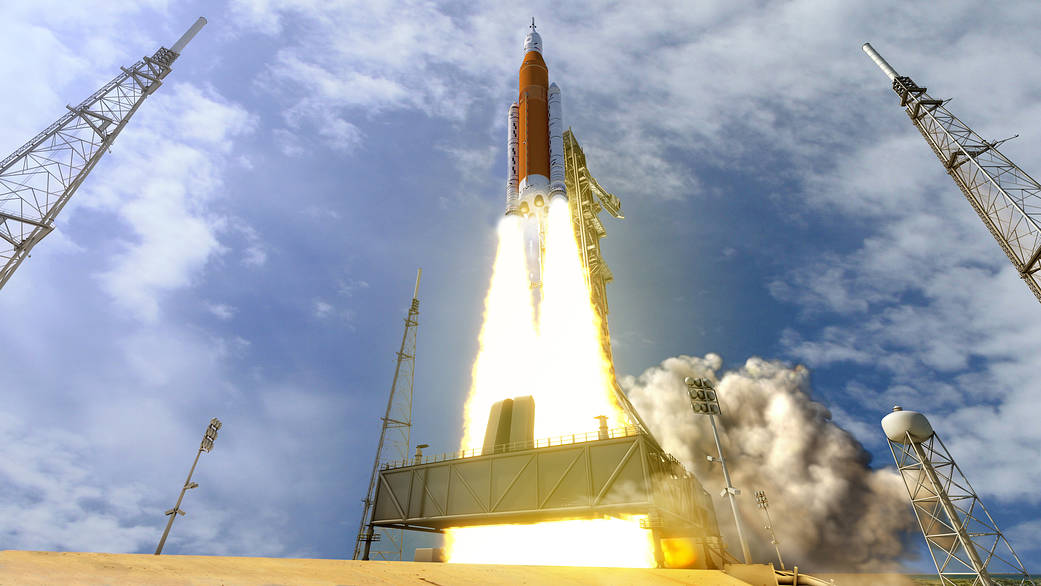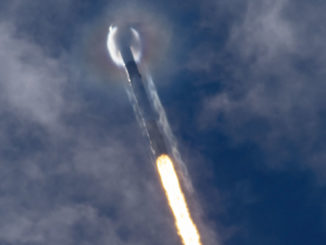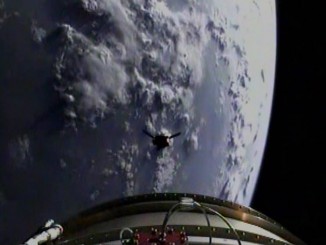
Northrop Grumman test-fired a five-segment solid-fueled booster for NASA’s Space Launch System Wednesday at the company’s test facility in Promontory, Utah.
The powerful rocket ignited at 3:05 p.m. EDT (1:05 p.m. MDT; 1905 GMT) Wednesday and burned for a little more than two minutes.
The Flight Support Booster, or FSB-1, test will help engineers evaluate new materials, processes and improvements for upgraded solid rocket boosters that will power NASA’s Space Launch System heavy-lift rocket later in the 2020s.
Positioned horizontally in a test stand for the hotfire test Wednesday, the 154-foot-long booster generated about 3.6 million pounds at maximum power. The five-segment booster is an extended version of the solid rocket motor that flew on the space shuttle.
“It is really impressive to see a rocket that large fire off in the desert,” said Bruce Tiller, manager of the SLS boosters office at NASA’s Marshall Space Flight Center in Huntsville, Alabama.
At first glance, the test-firing appeared to go according to plan, Tiller said. Engineers are analyzing detailed telemetry from hundreds of data channels measuring temperatures, pressures, strain and other parameters on the motor.
A primary objective for the test-firing Wednesday was to examine the performance of the rocket’s fuel — an aluminum powder — procured from a different supplier, according to Charlie Precourt, vice president of propulsion systems at Northrop Grumman.
The rocket motor consumes the aluminum powder in combination with ammonium perchlorate. The two chemicals are mixed in epoxy resin, which cures with a rigidness of a pencil eraser and remains stable until the rocket is ignited, Precourt said.
Engineers also tested new materials in the rocket motor’s nozzle during Wednesday’s hotfire test.

The boosters for the first three SLS missions are either built or in production, and NASA and Northrop Grumman have booster sections left over from the space shuttle program for eight SLS flights. The booster segments were reused during the shuttle program, but will be discarded after each SLS mission.
Some of the rocket motor’s design changes tested Wednesday could be introduced beginning with the ninth SLS flight, officials said.
Aside from testing new materials, the test-firing Wednesday also provided another opportunity to evaluate the motor’s manufacturing and performance ahead of the first SLS flight.
Northrop Grumman, through its precursor company Orbital ATK, had conducted five previous test-firings of the five-segment SLS booster since 2009, including two developmental motors and two full-size qualification units to certify the booster design is ready for flight.
“It feels like a milestone in a lot of ways, not only for the data that we intended to get out of this test, but really the string of events that are going on right now toward the first launch of our Space Launch System,” Tiller said.
The segments for the two boosters slated to launch on the first unpiloted SLS test flight arrived at the Kennedy Space Center in June following a train journey from Northrop Grumman’s booster manufacturing plant in Utah. Those segments are now being readied for stacking on top of the SLS mobile launch platform inside the Vehicle Assembly Building at Kennedy.
Stacking of the boosters for the first SLS test launch, known as Artemis 1, will commence once the SLS core stage completes a critical full-duration hotfire test at the Stennis Space Center in Mississippi later this year. The solid rocket boosters will provide about three-quarters of the power to drive the SLS off the launch pad.
The Artemis 1 flight will carry an uncrewed Orion spacecraft into space to begin a mission to orbit the moon, then return to Earth after a test flight lasting several weeks. That will set the stage for the first piloted SLS/Orion mission around the moon in 2023.
NASA intends for the astronauts on the third SLS/Orion launch to attempt a landing on the moon’s south pole. The Trump administration has set a 2024 deadline for the moon landing mission, known as Artemis 3.
Northrop Grumman won a NASA contract June to begin planning the production of boosters six additional SLS launches, beyond the motors for the first three flights that were already under contract.
Precourt was asked twice during a conference call with reporters after the hotfire test Wednesday about the future of Northrop Grumman’s OmegA rocket program, which the U.S. military passed over last month in the Pentagon’s selection of two launch service providers for national security satellites.
United Launch Alliance and SpaceX won the lucrative contracts, beating Northrop Grumman and Blue Origin in the competition.
Without confirming reports that the OmegA program will be terminated without Pentagon support, Precourt said Northrop Grumman will “leverage” advancements made during the OmegA rocket’s development in future SLS booster designs.
The OmegA rocket was being developed at the same Northrop Grumman facility in Utah that is home to SLS booster fabrication, along with production of solid rocket motors for ULA’s Vulcan rocket and the military’s nuclear missile arsenal.
Precourt identified manufacturing efficiencies using robotic tools as an example of process improvements introduced on the OmegA program.
“We’ve leveraging OmegA in this program already,” Precourt said, referring to the Space Launch System. “It’s going to be leveraged in a number of other programs.”
Tiller agreed, adding that manufacturing techniques pioneered by the OmegA program will be repurposed for the SLS boosters.
“From our standpoint, the OmegA work was extremely beneficial to us,” he said.
Email the author.
Follow Stephen Clark on Twitter: @StephenClark1.



